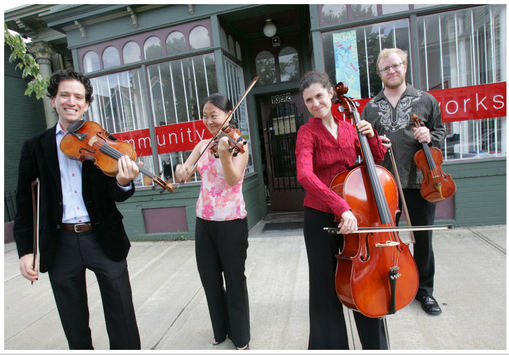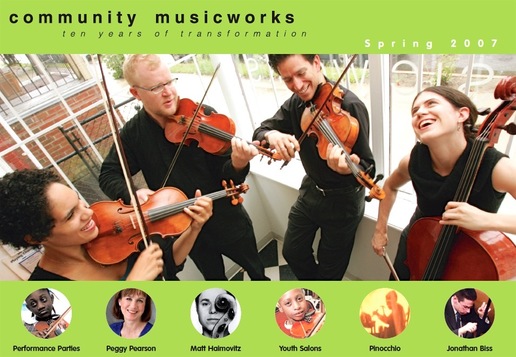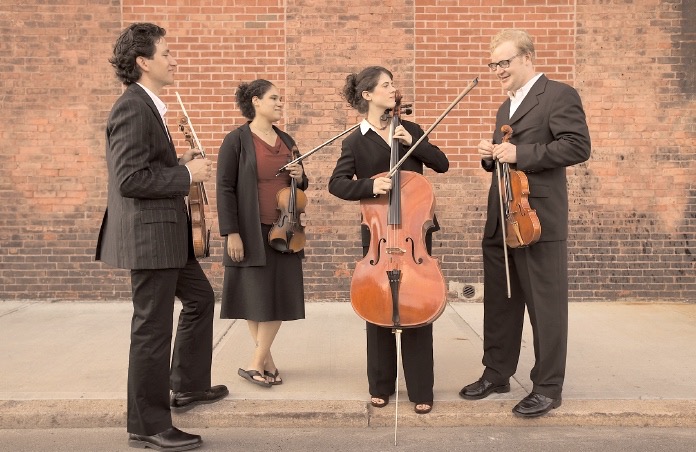|
On Tuesday, May 3, Boston-based participants will present their cumulative work to their colleagues and invited guests in the form of a five-minute "pitch," a one-page handout, and a poster board presentation. At my request, some of the participants have provided overviews of their organizations for guests to review in advance. Ashleigh Gordon, Castle of our Skins: Bithyah Israel and Rhea Gibson, City Strings United: Brian Friedland, Jazz All Over Boston: Kevin Leppman, School of Honk: Weronika Balewski and Colleen McElroy, Emissary Quartet: Laura Randall, The Halo Ensemble: Betty Hillmon, Boston City-Wide String Orchestra:
0 Comments
How we represent our ideas--and our organizations--on paper and on screens is extremely important to consider. The advertising industry fully understands the power of creating powerful first impressions. In the nonprofit sphere, with scant resources at our disposal, we need to be particularly savvy about creating and selecting a few key images that 1. highlight what is special (unique) about us, and 2. effectively tell the story of our mission. Then, with positivity, optimism, and confidence, we reinforce our story through repetition. As I shared in class recently, Community MusicWorks is a good case study. Early on, we established the urban string quartet residency in the storefront on Westminster Street. The idea of the "neighborhood string quartet" became the iconic image that we wanted everyone to latch onto. Here are some examples of how we did that across various print and web materials. What immediate impressions of Community MusicWorks do these images spark? Next is my all-time favorite photo of the Providence String Quartet (and I don't care that Sara, my friend and the PSQ's founding cellist, thought she looked silly--I love that we caught a warm and personal interaction between the four musicians, still keeping the storefront as part of the story. An earlier attempt was less successful... Urban, yes, but the wrong kind of urban identity: Later, when Community MusicWorks featured a larger and mixed resident ensemble, we still held onto the story of the neighborhood storefront: Now in the home stretch, we have been creating and refining fundraising plans. (See Fundraising plans, Part 1 here.) Below is an example of a one-year fundraising plan, courtesy of Laura Randall. In theory, each line item represents a specific strategy and timeline that has been carefully considered. In practice, at least in my experience, there is a fair amount of guesswork involved, especially in the beginning years of a new initiative when there is no history of fundraising success to build upon. This is where fundraising becomes really exciting! Creating something out of nothing, and growing the base of philanthropic support, is a significant risk. Putting a strategy in place to guide your fundraising efforts over the course of a full year (including modifying the plan as you learn new information) gives you the best chance for success. In March, we practiced jumping through hoops, otherwise known as crafting the grant application. In this highly competitive process, you don't want to give a funder any excuse to remove you from consideration. Taking care of all the nitty gritty details is so important, just as it is essential to speak the funder's language back to him/her. If the funder is interested in Creative Youth Development, it is incumbent on you to (accurately) frame your proposal for a music education program in those specific terms. If the funder cares about providing equitable access to high quality educational opportunities, than it is your job to address that goal in your narrative about providing after-school music lessons and workshops, and in those terms. Below is a fictional Request for Proposals, a composite of numerous grant applications that Bryony Romer helped me create several years ago. To me, its specificity--paired with its occasional vagaries--accurately portrays the reality of my experience with grant-writing. Courtesy of CMW's Josie Davis, here is a proposal narrative submitted by the Merrymeeting String Project. It is an excellent proposal: so clearly organized and purposeful in addressing the interests of the Carter Family Charitable Trust. Too bad that the Carter Family Trust review committee was specifically interested in funding new initiatives only in "urban" communities. However, looking at Brunswick as a relatively urban community in the context of the decidedly rural state of Maine, the committee (er, the rest of us) still managed to award her a grant in the end! |
AboutSharing student project documentation and, more recently, my own. Archives
June 2022
Categories |




 RSS Feed
RSS Feed
